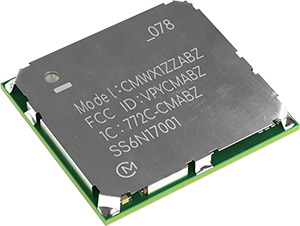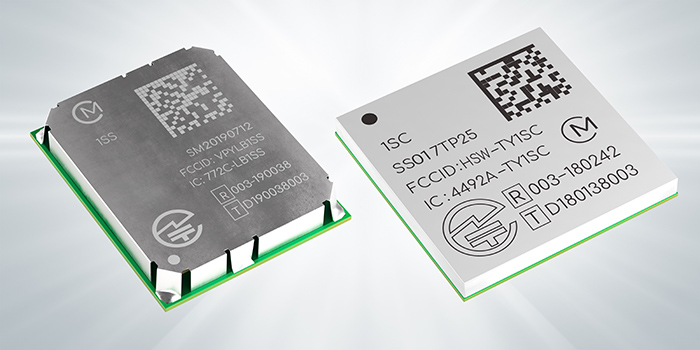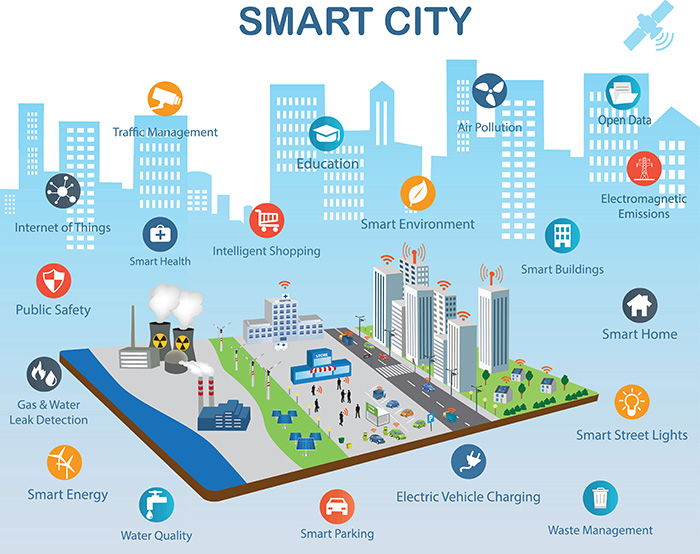Selecting the most appropriate LPWAN protocol
Projections show that the trend for people living in urban, rather than rural, environments will continue, with hundreds of millions relocating to cities over the next few decades. Consequently, the demands being placed on local amenities and the rate at which available resources are consumed are both rising dramatically – and this, in turn, is putting intense strain on the existing infrastructure. Koichi Sorada, Product Manager and Pawan Jalagar, Product Engineer, IoT and Connectivity Modules, Murata, investigate.
Change is needed to mitigate the effects of overcrowding, the excessive burden on public services and acute resource depletion. These issues can all be addressed through the utilisation of advanced engineering and the emergence of what are now commonly referred to as ‘smart cities’. New York, Dubai, Singapore, Amsterdam, Bristol and Mumbai are just some of the places where early examples of this technology have been successfully put into action.
Fundamental to the operation of any smart city will be the free flow of data. This is its lifeblood – emanating from a variety of sources and pertaining to a broad array of different essential services. Moving forward, municipal bodies, utility companies and commercial enterprises will all make use of such data to ensure that their operations are running as expected in the long term (and to make the necessary adjustments if they are not), or to rapidly react to more time-sensitive situations as they arise.
The results of all this can be far-reaching – there will be less congestion as a result of more sophisticated traffic management, better monitoring of air quality in order to combat pollution problems, faster detection of water leaks, improved law enforcement, accelerated responses by emergency services, intelligent street lights, automatic meter reading (AMR) and a plethora of other beneficial activities.
Credentials of wireless communication
Once data has been acquired from the multitude of distributed nodes (which will often be remotely located), it must be transported in the most efficient way possible. Finding an optimal transportation method will be vital if the service is to be both operationally effective and economically viable.
Wireless technologies will have significant advantages over wireline technologies (such as Ethernet), as they offer far greater installation convenience. For building/industrial automation systems (used inside homes, offices and factories), short-range wireless protocols will prove to be the most applicable – namely Bluetooth, WiFi and Zigbee. When it comes to city-scale communication, this will be made possible via the deployment of low-power wide-area network (LPWAN) technology.
Which LPWAN?
There are a variety of LPWAN protocols to be aware of, and the best option depends on the application criteria involved. Here are some more details on each type.
Sigfox is long-established and claims many LPWAN deployments across the globe. As it resides in the industrial, scientific and medical (ISM) band, there are no ongoing licensing costs associated with it. However, this is a proprietary wireless technology, rather than a universal standard. That means only one operator is appointed to look after the network in each country (and its coverage will depend on the outlay made by that operator). Sigfox is well suited to fleet management and general logistical tasks, where continuous nationwide coverage is advantageous, but there are few real uses for it within a true smart city context.

Above: Figure 1. The Type ABZ LPWAN module from Murata
LoRa is also situated in the ISM band (following the same free model), and uses identical frequencies to Sigfox. This is generally preferred because of its bi-directional operation (admittedly Sigfox is now bi-directional, but only to a limited degree), expanded capacity and incorporation of AES-128 encryption. It first gained traction in relation to AMR, and has gone on to form the basis of numerous smart city-related deployments. As well as being of value to utilities, it is also showing almost boundless potential in smart parking, monitoring water quality, smart waste management, and more.
In addition to LoRa and Sigfox, there are the cellular LPWAN protocols to consider. These are likely to have appeal due to their stronger performance parameters and heightened quality of service (QoS), though admittedly they do require certain trade-offs to be made, since there are licensing costs to factor in.

Above: Figure 2. The Type 1SS and Type 1SC cellular LPWAN modules
Narrowband IoT (NB-IoT) is also known as LTE Cat NB1 and is a derivative of LTE 4G mobile technology. It can co-exist with 2G, 3G and 4G mobile networks. It utilises only a small proportion of the LTE frequency band, to keep power consumption down. NB-IoT delivers elevated network efficiency compared to its non-cellular LPWAN counterparts, and also offers more comprehensive security (so it is suited to any use case where a payment gateway is required). Alternatively, there is Cat-M1 which is based fully on LTE. Thanks to its greater bandwidth (1.4MHz, compared to NB-IoT’s 250kHz) this has a higher supported data rate (trebling or possibly even quadrupling the throughput that NB-IoT can achieve), plus lower latency levels. That said, it is also more expensive and consumes more power.
Both these cellular LPWAN protocols have their own distinct benefits. It is acknowledged that when mobility is mandated, Cat-M1 will be the best candidate because of its superior device-positioning capabilities, whereas NB-IoT is better suited to stationary, cost-sensitive applications. It should be also be noted that there will be geographic variations that need to be respected, with greater NB-IoT focus in Europe and dominance in China and more investment in Cat-M1 support in North America.
Hardware considerations
After picking a protocol that matches your particular application criteria, there are still questions to answer about which LPWAN module you should specify, and the main attributes to look for. Almost without exception, any form of smart city wireless implementation will be subject to stringent power constraints – therefore a minimal power budget is paramount. A solution should be sourced that prolongs battery life as much as possible, so that less-frequent battery replacements are required. Periods of a decade or more will ideally be supported by the specified module.
Compactness is equally important, as this means there will be scope to retrofit hardware into existing infrastructure. It also makes wearable monitoring solutions (such as those targeted at the elderly to maintain independent living) more comfortable. Cost-effectiveness is another attractive characteristic. This will reduce the initial investment necessary for bringing a service online. Then there is scalability, as in many use cases a large number of nodes will need to be accommodated within the system – so having a solution (both in terms of hardware and software) that makes this straightforward to achieve will undoubtedly be a plus point. Access to optimised antenna technology is also an advantage, as less power will be consumed when transmitting the signal.

Figure 1: The Type ABZ LPWAN module from Murata - Murata’s compact, LoRa-compliant Type ABZ module has dimensions of just 12.5×11.6×1.76mm, but delivers strong performance characteristics – with an output power level reaching 18.5dBm and a -135.5dBm receive sensitivity. It comprises a 32-bit STM32L0 microcontroller from STMicroelectronics, plus a Semtech SX1276 wide dynamic range transceiver.
Figure 2: The Type 1SS and Type 1SC cellular LPWAN modules - With regard to cellular LPWAN, Murata has solutions for both NB-IoT and Cat-M1. The newly released Type 1SS is an NB-IoT module which utilises a Mediatek MT2625 modem. This is complemented by the Type 1SC, a combined Cat-M1/NB-IoT module with an Altair LT1250 modem. With the Type 1SS drawing 3.5μA current and the Type 1SC drawing only 1.6μA current in Deep Sleep Mode (PSM), and with LTE’s extended discontinuous reception (eDRX), these modules can run off a single battery for at least ten years, resulting in fewer technician call-outs. The Type 1SC has a 11.4×11.1× 1.5mm form factor, while the Type 1SS is housed in a 10.6×13.2×1.8mm package.
Conclusion
Through the insights that can be derived from the capturing of datasets, substantial improvements can be made to the functioning of a city – and LPWANs will be the conduits for moving much of this data around. There will be several things to consider when choosing which LPWAN technology to utilise. Operational range, regularity of communication, latency levels, QoS and power efficiency should all be taken into account. Requiring little prior RF engineering experience to use, Murata’s latest generation of LPWAN modules have been purposely designed to simplify implementation of the wireless infrastructure needed to support smart city operations, and improve the lives of the people who live there.




